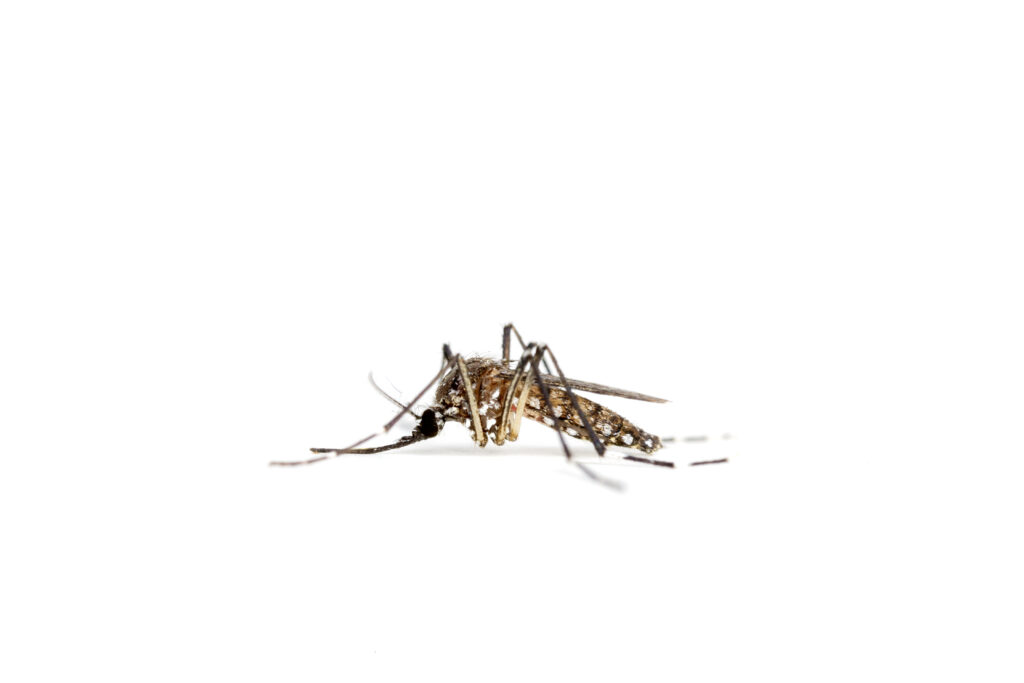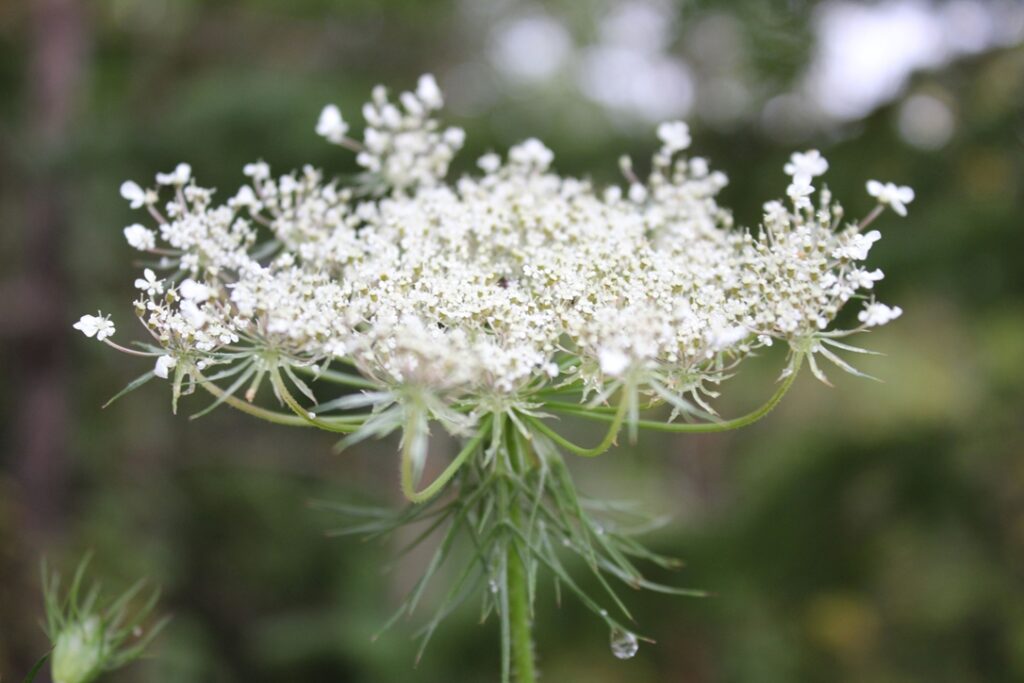
Pyrethrin vs. Pyrethroid
Pyrethrins and pyrethroids are frequently used in homeowners backyards as mosquito control, but these insecticides harm more than just mosquitoes. Pyrethrins and pyrethroids are highly toxic to honey bees and aquatic life such as fish and insects (Bond et al, 2014). In Canada, when pesticides are being evaluated, field and laboratory studies are conducted on land organisms such as earthworms, pollinators such as bees, predatory/parasitic insects, birds, small wild animals, and plants. It is interesting that it is not listed what species are being tested. These studies evaluate the pesticides effect on reproduction, growth, mortality and other measures (Government, 2023). However, our neighbour (USA), has more lenient evaluations. These evaluations do not consider the effect the pesticide has long-term instead focuses on the mortality rate after 48 hours (Joe, 2024). In this article, we will cover what pyrethrins and pyrethroids are, how they affect the environment, and ways to focus on personal protection from mosquitoes and diminishing mosquito breeding sites. In some chrysanthemum flowers, the compound pyrethrin can be found. Chrysanthemums are commonly planted in the garden as a natural pesticide. Although pyrethrins break down quickly when exposed to sunlight, pyrethrins were used as a building block for the creation of longer lasting pyrethroids. When an insect comes into contact with pyrethrins, the insect becomes excited leading to paralysation and eventually dies (Bond et al, 2014).

Pyrethroids are man-made and there are three commonly used: permethrin, resmethrin, and D-phenothrin. Permethrin is the most-widely used pyrethroid. It has a low-cost and high effectiveness, but it is broad-specturm insecticide (Environmental, 2024). Broad-specturm insecticides do not just target one species (mosquitoes), but rather it will target anything. This leaves many other species (bees, butterflies, moths, etc) vulnerable to the effects of the permethrin. Most of the pyrethroids are broad-specturm including resmethrin and D-phenothrin (National, 2012). Resmethrin is a restricted pesticide since it is toxic to fish (Environmental, 2024). This is a double-edge sword – get rid of mosquitoes with resmethrin while also harming one of the biggest predators of mosquitoes. D-phenothrin is commonly used around building, recreation areas, and direct animal treatment to kill fleas. All three of these products negatively affect the ecosystem. These chemicals are typically released in the air from helicopters, tractors, or aerosol bombs for the indoors, but also it is used in the backyards of city homes (Centre, 2014). When using helicopters, there is bound to be drift (when pesticides move by air to an area not to be intended to be sprayed) which affects more of the ecosystem. Pyrethroids used to break down within 1-2 days due to photodegradation (breaking down due to sunlight), but development in the pesticide field is making these chemicals last for a few months in the environment (Centre, 2014). This increased period of time in the environment increases the chances of non-target organisms coming into contact with this deadly insecticide.
So what can you do?
Since pyrethroids are toxic to bees and fish, the Ministry of the Environment suggests focusing on personal protection and removing breeding sites. Personal protection would include:• Avoid gardening during dusk and dawn when mosquitoes are most active• Wear long-sleeved, light-colour shirts, long pants and socks when outdoors• Use an insect repellent• Avoid gardening in bush areas Removing breeding sites includes:• Identify where water accumulates on land and remains for longer than 7 days. Fill in these sites.• Eliminate structures that accumulate water wherever possible. These areas could be bird baths (or frequently change the water), cans, clogged roof gutters, and yard decorations. • Drain or cover pools on property• If you have a pond, use aerators to create water surface movement to prevent mosquitoes from breeding. Artificial ponds can be stocks with fish such as bass and/or rainbow trout which eat larvae. • To reduce risk to pollinators, application is restricted or prohibited during the crop blooming period for bee attractive crops (King’s, 2024).
REMEMBER: A pest is not a pest until proper identification has occurred (Joe, 2024). Pests play a role in our ecosystem too! Even if it is a pest, please try to use mechanical methods to deter them before the use of any chemical.
ReferencesBond, C.; Buhl, K.; Stone, D. 2014. Pyrethrins General Fact Sheet; National Pesticide Information Center, Oregon State University Extension Services. http://npic.orst.edu/factsheets/pyrethrins.html.Centers for Disease Control and Prevention. (2014, March 25). Pyrethrins and Pyrethroids. Centers for Disease Control and Prevention. https://wwwn.cdc.gov/TSP/PHS/PHS.aspx?phsid=785&toxid=153#:~:text=Pyrethrins%20and%20pyrethroids%20are%20primarily,%2C%20or%20hand%2Dheld%20applicators.Environmental Protection Agency. (2024, March 12). Permethrin, Resmethrin, d-Phenothrin (Sumithrin®): Synthetic Pyrethroids For Mosquito Control. EPA. https://www.epa.gov/mosquitocontrol/permethrin-resmethrin-d-phenothrin-sumithrinr-synthetic-pyrethroids-mosquito#:~:text=Permethrin%2C%20resmethrin%2C%20and%20d%2D,by%20the%20EPA%20since%201979.Government of Canada. (2023, October 23). Pesticide assessments in Canada: Environmental risk. Canada.ca. https://www.canada.ca/en/health-canada/services/consumer-product-safety/pesticides-pest-management/public/protecting-your-health-environment/pesticide-assessments/environmental-risk.htmlJoe Gardener. (2024, February 29). How pesticide regulations fail pollinators: Joegardener®. joe gardener® | Organic Gardening Like a Pro. https://joegardener.com/podcast/how-pesticide-regulations-fail-pollinators-xerces-society/King’s Printer for Ontario. (2024, March 19). Controlling mosquitoes on rural and farm properties. ontario.ca. https://www.ontario.ca/page/controlling-mosquitoes-rural-and-farm-propertiesNational Pesticide Information Center. (2012, October 10). D-Phenothrin. National Pesticide Information Center. http://npic.orst.edu/ingred/d-phenothrin.html#:~:text=d%2DPhenothrin%20is%20a%20broad,rapidly%20to%20carry%20the%20message.





About The Author: Lara Cochrane
More posts by Lara Cochrane